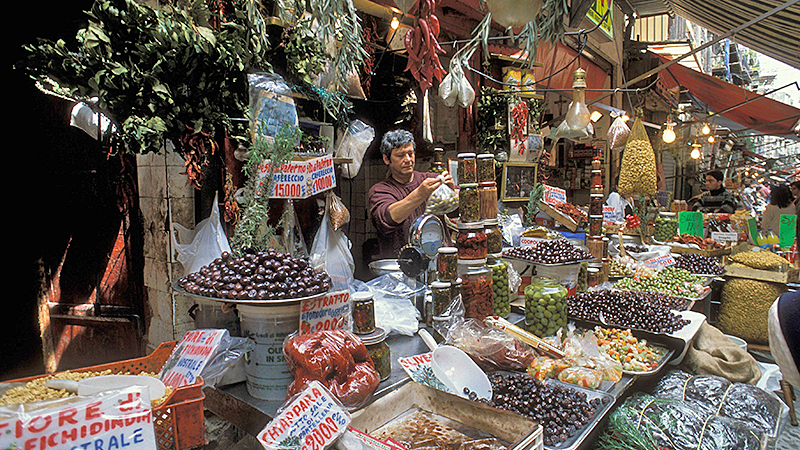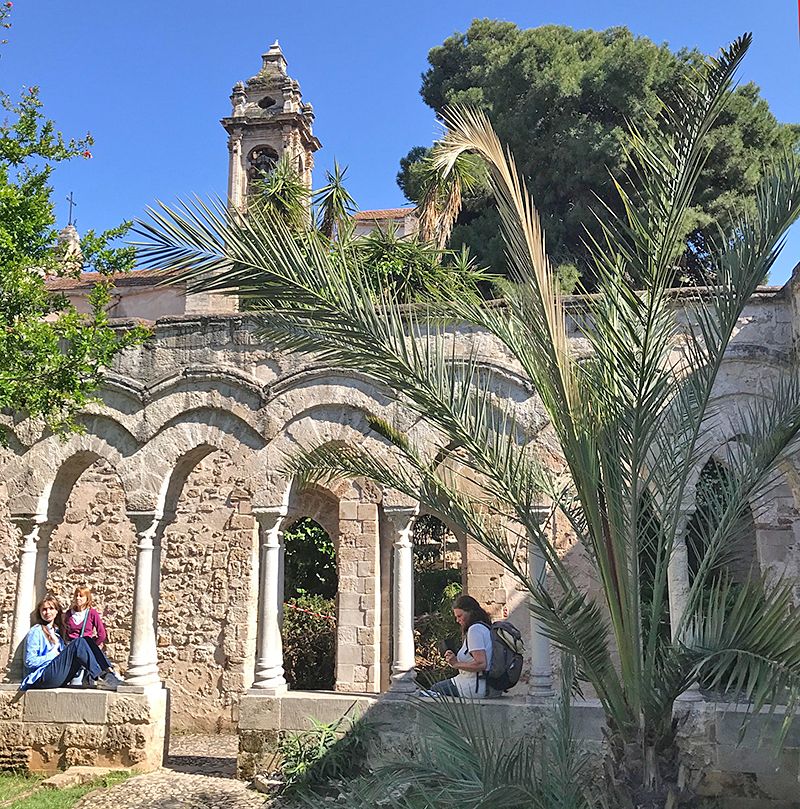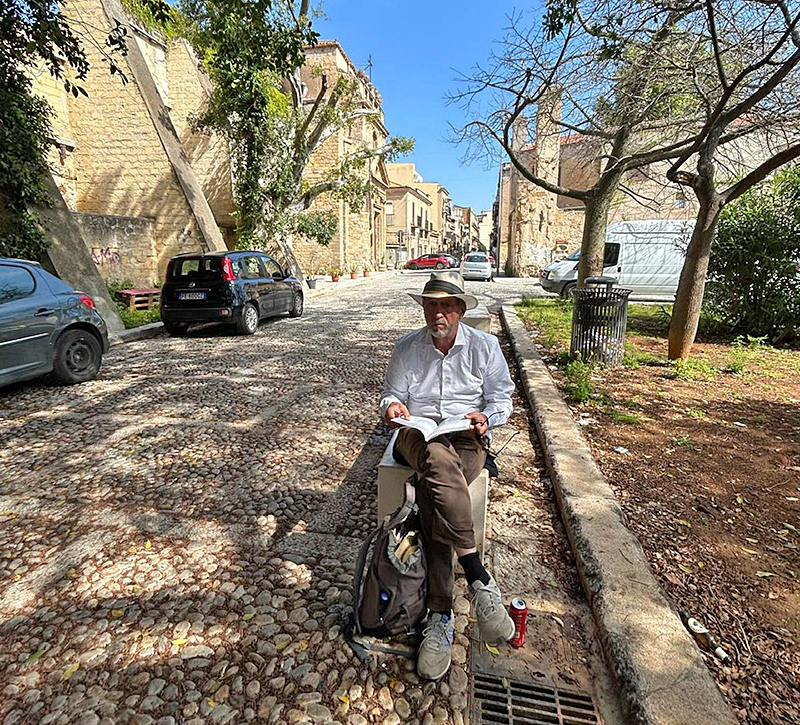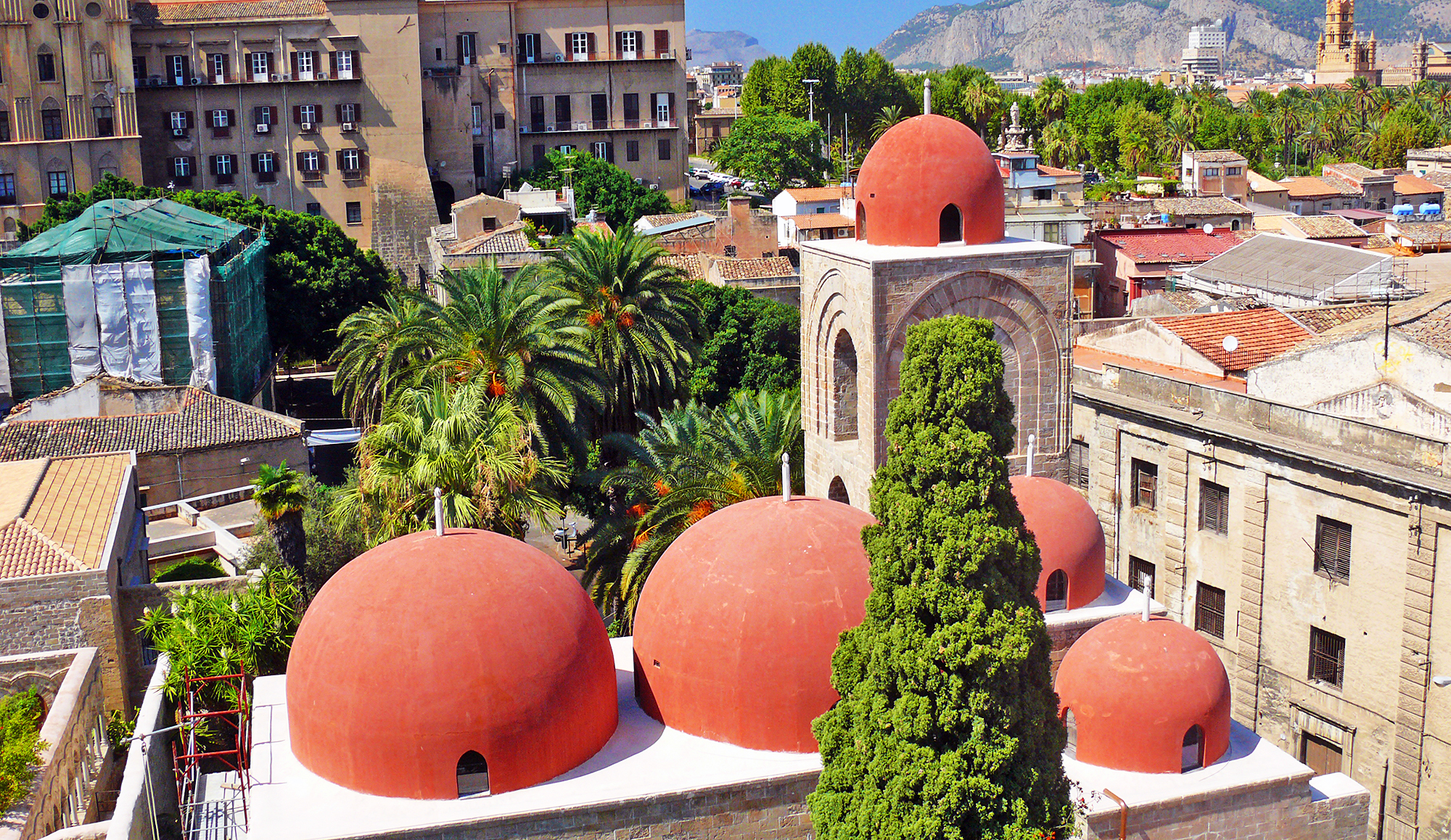Travel blog: Sicily’s metropolis Palermo represents the heritage of East and West.
ISLAMIC TIMES – Palermo, the capital of Sicily, is a fascinating melting pot of history, culture and culinary heritage. Shaped by thousands of years of rule by the Phoenicians, Romans, Arabs, Normans and Spaniards, the city reflects a mix of European and Oriental architecture. Domes, churches and palaces tell of an eventful past.
Palermo: Go with the flow
Its old town delights with winding alleys, lively markets such as Ballarò and Vucciria, and a wealth of historic buildings. Among them are the magnificent cathedral, the Norman royal palace with its golden Cappella Palatina and the Teatro Massimo, one of the largest opera houses in Europe. The city is worth a visit. Many tourists work their way through a list of sights, or, as we prefer, just go with the flow.
We are interested in Islamic heritage and keep an eye out for it. Modern travel guides usually only mention briefly the influence of Arab architects on the Norman rulers.
Goethe’s Italian Journey also has little to say about this era, as the poet focused primarily on antiquity. In Wanderjahre (Years of Travel), another famous travelogue about Italy by Friedrich Gregovorius (1821-1891), the historian mentions, out of a sense of duty as a chronicler, that the cathedral was formerly a mosque.
And he reports: ‘Only on a single column of the southern portico can one still see an Arabic inscription, the 55th verse of the 7th Sura, which reads: Your God created the day, followed by the night, and the moon and the stars are added to the work according to a command. Is not His the creation and His the dominion? Praise be to the Lord of the centuries!’

Photo: imago/hardt
Irritation about Arab heritage
We ask at the tourist office for information about the city’s Arab heritage. The elderly lady looks at us somewhat irritated. She has nothing to contribute on the subject. When asked, she categorically claims that no church in the city was built on top of a mosque. We leave her to her beliefs and move on without having gained any insight.
In an alley in the former Arab quarter, we happen to stop in front of a dilapidated house that is barely held together by a wooden structure. We see traces of various architectural features on the wall and a faded inscription that we try to decipher. The sunlight blinds us, but yes, it is Arabic. We cheerfully continue our search for lost time.
A jewel, in our opinion, is San Giovanni degli Eremiti (Church of the Hermits) with its characteristic red domes and enchanting, quiet garden – a place of tranquillity in the middle of the city. The Arab heritage is evident here, as a Muslim burial ground was discovered during excavations.
Experts continue to debate whether at least some parts of the building originate from a mosque. We sit under a palm tree for quite a while and marvel at the courtyard, which is surrounded by a cloister with columns and arches. Time has stood still here.
The next day, we visit the Zisa Palace on the outskirts of the city – an Arab-Norman masterpiece from the 12th century that originally served as the summer residence of kings. The architecture is reminiscent of Moorish buildings and testifies to Palermo’s deep connection to the Islamic world.
The fountain hall, through which an open water pipe runs for cooling, is an example of this architectural style. From its rear wall, the water poured into two basins and then flowed into a pond, a typical motif of Arab palace architecture. In the museum, we like an exhibited tombstone of a deceased woman from the Middle Ages, which is inscribed with texts in four different languages. Hebrew, Latin, Arabic and Greek – this diversity is indicative of a highly advanced civilisation.

Photo: author
Arabic Palermo
In the museum shop, we purchase a book that is only available in Italian: Palermo araba. Una sintesi dell’evoluzione urbanistica (831–1072) (Arab Palermo. A summary of urban development (831–1072)). This work by Ferdinando Maurici analyses the urban development of Palermo under Arab rule and highlights the architectural changes of this period.
It provides an overview of the arrival of the Muslims in Sicily in 831 and the subsequent development. It emphasises the importance of the capital of the emirate as the centre of the Calabrian dynasty. At that time, the city experienced an economic and cultural boom that was reflected in its urban structure.
Through excavations and studies, he identifies the course of the city walls, the layout of the city districts and the location of public squares. He focuses on the remains of mosques, baths and markets that reflect the social life of the time. The author describes the diversity of the population, consisting of Arabs, Berbers, Christians and Jews, and recounts how these groups were integrated into the urban space.
Cultural services such as libraries, schools and mosques played a central role in daily life and promoted the exchange of knowledge and ideas. The author presents in detail the importance of markets in the urban development of Palermo. These institutions were not only centres of trade, but also places of social life and cultural diversity, which was typical of Arab cities at that time. It is astonishing that no buildings from the Islamic era have been completely preserved today.
One of the historical sources used by Maurici is the geographer Ibn Hawqal, who described the markets in Palermo in the 10th century. These places were known for their variety of goods, including spices, textiles and food imported from the Islamic world. His work Ṣūrat al-‘Arḍ contains detailed geographical and ethnographic descriptions of various regions, even if they are not classic ‘travelogues’ in the literary sense, as in the case of Ibn Battuta.
In his work, he describes Palermo (al-Madinah) as a populous and multicultural city with a Muslim, Christian and Jewish population. He emphasises that there were 300 mosques there. Historical accounts are often disputed. Elsewhere, we read that modern historians consider this number to be exaggerated.

Photo: author
Between the sea and the mountains
Back in the city, we sit down in a café on the magnificent seafront promenade. From here, Goethe described Monte Pelligrino, a promontory framing the bay, which the poet considered one of the most beautiful mountains in the world. ‘Italy without Sicily is no image at all in the mind’s eye: here is the key to everything,’ he wrote in his diary. Who would disagree?
The cheerful waiter serves two cappuccinos. Meanwhile, we observe an everyday scene on the street. A homeless man living in a kind of tent on the side of the road, with a shopping trolley in front of him, approaches a few young women. He asks for a small donation. Our waiter steps in and accompanies the passers-by, who feel harassed, into his café.
Then he returns and hands the man a food parcel and a bottle of water. The recipient nods silently. Poverty and how to deal with it is an age-old issue in Sicily. We remember the thousands of refugees who wash up on the coasts of southern Italy every year. What will history tell of their fate?
Not far from here, we visit the Guilia Park, which Goethe immortalised in his writings. ‘It is the most wonderful place in the world,’ he wrote, impressed by the fragrant flora and transported back to ancient times. After stops in Rome, Naples and Palermo, the circle is complete. A visit to the ‘wonder garden’ inspires him to read Homer’s Odyssey. Today, the grounds appear somewhat neglected and run-down.
Shortly after his stay, the botanical garden was opened in the immediate vicinity. Here, one can sense the poet’s enthusiasm for the island’s flora and fauna. There are 80 different varieties of palm trees to marvel at. Sicily was not only shaped by a wide variety of people. ‘Immigrants’ from the plant world also enrich the landscape today. The lemons, which are part of the country’s mythology and symbolise our longing for Italy, were brought here by the Arabs.












